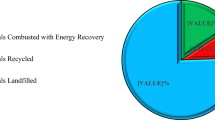Abstract
The order fulfillment planning process in the thin film transistor–liquid crystal display panel industry is analyzed in this study. A two-phase order fulfillment planning structure is proposed, including the multi-site order allocation among module factories and single-site shop floor scheduling in each factory. In the first phase, the order allocation problem is solved using a mathematical programming model considering practical characteristics, including product structures, customer preferences, alternative bill-of-material, and production constraints. In the second phase, a constraint-based simulation scheduling algorithm is developed to address the scheduling problem in each module factory for determining the ideal order release time. Since production planning and scheduling are dealt with different time scales, the major challenge for the integration lies in the large problem size of the optimization model and becomes intractable. Most of the time bucket-based planning methods in the past literature simplify their scheduling models, but in this paper the detailed shop floor operations and processing behaviors are considered, such as changeover time, processing sequence of orders, and machine characteristics. Finally, a practical case in Taiwan will be employed to testify the feasibility of the proposed order fulfillment planning process; meanwhile, through the analysis of experiments, the adaptability and comparison of different planning approaches in an environment of various market demands are discussed.
Similar content being viewed by others
References
Aissani, N., Bekrar, A., Trentesaux, D., & Beldjilali, B. (2011). Dynamic scheduling for multi-site companies: A decisional approach based on reinforcement multi-agent learning. Journal of Intelligent Manufacturing. doi:10.1007/s10845-011-0580-y.
Alain G. (2001) Multi-site planning: A transshipment problem. International Journal of Production Economics 74: 21–32
Almada-Lobo B., Oliveira J. F., Carravilla M. A. (2008) Production planning and scheduling in the glass container industry: A VNS approach. International Journal of Production Economics 114: 363–375
Amer Y., Luong L., Lee S. H. (2010) Case study: Optimizing order fulfillment in a global retail supply chain. International Journal of Production Economics 127: 278–291
Carlo V. (1999) Multi-plant production planning in capacitated self-configuring two-stage serial systems. European Journal of Operational Research 119: 451–460
Chan F. T. S., Chung S. H., Choy K. L. (2006) Optimization of order fulfillment in distribution network problems. Journal of Intelligent Manufacturing 17: 307–319
Dickersbach J. T. (2009) Supply chain management with SAP APO TM. Springer, New York
Dogan M. E., Grossmann I. E. (2006) A decomposition method for the simultaneous planning and scheduling of single-stage continuous multiproduct plants. Industrial & Engineering Chemistry Research 45: 299–315
Gnoni M. G., Iavagnilio R., Mossa G., Mummolo G., Di Leva A. (2003) Production planning of a multi-site manufacturing system by hybrid modelling: A case study from the automotive industry. International Journal of Production Economics 85: 251–262
Harjunkoski I., Grossmann I. E. (2002) Decomposition techniques for multistage scheduling problems using mixed-integer and constraint programming methods. Computers & Chemical Engineering 26: 1533–1552
Hooker, J. N., Ottosson, G., Thorsteinsson, E. S., & Kim, H.-J. (1999). On integrating constraint propagation and linear programming for combinatorial optimization. In Proceedings of the sixteenth national conference on artificial intelligence and the eleventh Innovative applications of artificial intelligence conference innovative applications of artificial intelligence (pp. 136–141). Orlando, FL, USA: American Association for Artificial Intelligence.
Jain V., Grossmann I. E. (2001) Algorithms for hybrid MILP/CP models for a class of optimization problems. INFORMS Journal on Computing 13: 258–276
Kébé, S., Sbihi, N., & Penz, B. (2011). A lagrangean heuristic for a two-echelon storage capacitated lot-sizing problem. Journal of Intelligent Manufacturing. doi:10.1007/s10845-011-0514-8.
Li Z., Ierapetritou M. G. (2010) Production planning and scheduling integration through augmented Lagrangian optimization. Computers & Chemical Engineering 34: 996–1006
Lin J. T., Chen Y. Y. (2007) A multi-site supply network planning problem considering variable time buckets—A TFT–LCD industry case. The International Journal of Advanced Manufacturing Technology 33: 1031–1044
Lin J. T., Hong I. H., Wu C. H., Wang K. S. (2010) A model for batch available-to-promise in order fulfillment processes for TFT–LCD production chains. Computers & Industrial Engineering 59: 720–729
Lin, L., Hao, X. C., Gen, M., & Jo, J. B. (2011). Network modeling and evolutionary optimization for scheduling in manufacturing. Journal of Intelligent Manufacturing. doi:10.1007/s10845-011-0569-6.
Maravelias C. T., Grossmann I. E. (2004) A hybrid MILP/CP decomposition approach for the continuous time scheduling of multipurpose batch plants. Computers & Chemical Engineering 28: 1921–1949
Maravelias C. T., Sung C. (2009) Integration of production planning and scheduling: Overview, challenges and opportunities. Computers & Chemical Engineering 33: 1919–1930
Mirzapour Al-e-hashem S. M. J., Malekly H., Aryanezhad M. B. (2011) A multi-objective robust optimization model for multi-product multi-site aggregate production planning in a supply chain under uncertainty. International Journal of Production Economics 134: 28–42
Moon C., Kim J., Hur S. (2002) Integrated process planning and scheduling with minimizing total tardiness in multi-plants supply chain. Computers & Industrial Engineering 43: 331–349
Moon C., Seo Y., Yun Y., Gen M. (2006) Adaptive genetic algorithm for advanced planning in manufacturing supply chain. Journal of Intelligent Manufacturing 17: 509–522
Papageorgiou L. G., Pantelides C. C. (1996) Optimal campaign planning/scheduling of multipurpose batch/semicontinuous plants. 1. Mathematical formulation. Industrial & Engineering Chemistry Research 35: 488–509
Roe B., Papageorgiou L. G., Shah N. (2005) A hybrid MILP/CLP algorithm for multipurpose batch process scheduling. Computers & Chemical Engineering 29: 1277–1291
Roux W. (1999) Planning and scheduling in a multi-site environment. Production Planning & Control 10: 19–28
Stefansson H., Shah N., Jensson P. (2006) Multiscale planning and scheduling in the secondary pharmaceutical industry. AIChE Journal 52: 4133–4149
Tan W., Khoshnevis B. (2000) Integration of process planning and scheduling—a review. Journal of Intelligent Manufacturing 11: 51–63
Timpe C. H., Kallrath J. (2000) Optimal planning in large multi-site production networks. European Journal of Operational Research 126: 422–435
Tsai K.-m., Wang S.-c. (2009) Multi-site available-to-promise modeling for assemble-to-order manufacturing: An illustration on TFT–LCD manufacturing. International Journal of Production Economics 117: 174–184
Zhang L. L., Lee C. K. M., Xu Q. (2010) Towards product customization: An integrated order fulfillment system. Computers in Industry 61: 213–222
Author information
Authors and Affiliations
Corresponding author
Rights and permissions
About this article
Cite this article
Chen, YY. The order fulfillment planning problem considering multi-site order allocation and single-site shop floor scheduling. J Intell Manuf 25, 441–458 (2014). https://doi.org/10.1007/s10845-012-0695-9
Received:
Accepted:
Published:
Issue Date:
DOI: https://doi.org/10.1007/s10845-012-0695-9




